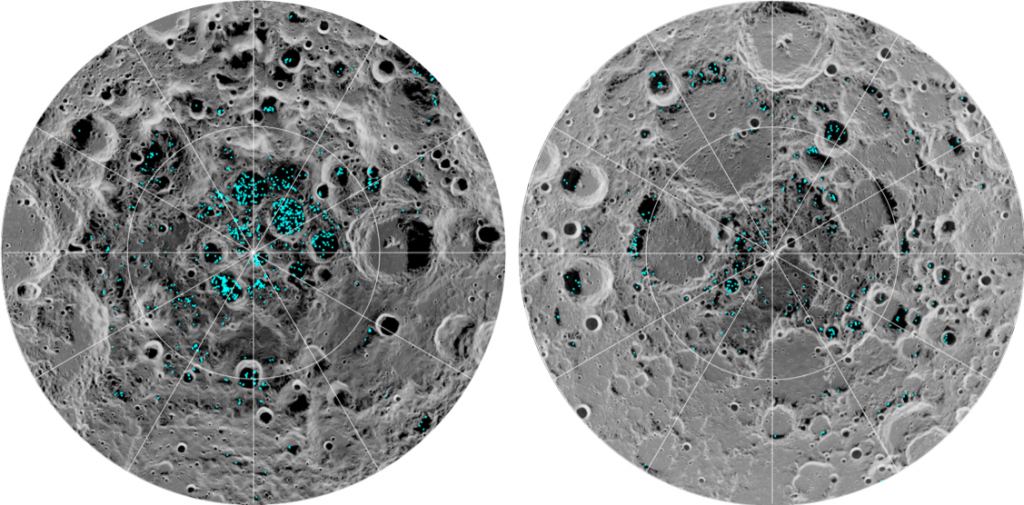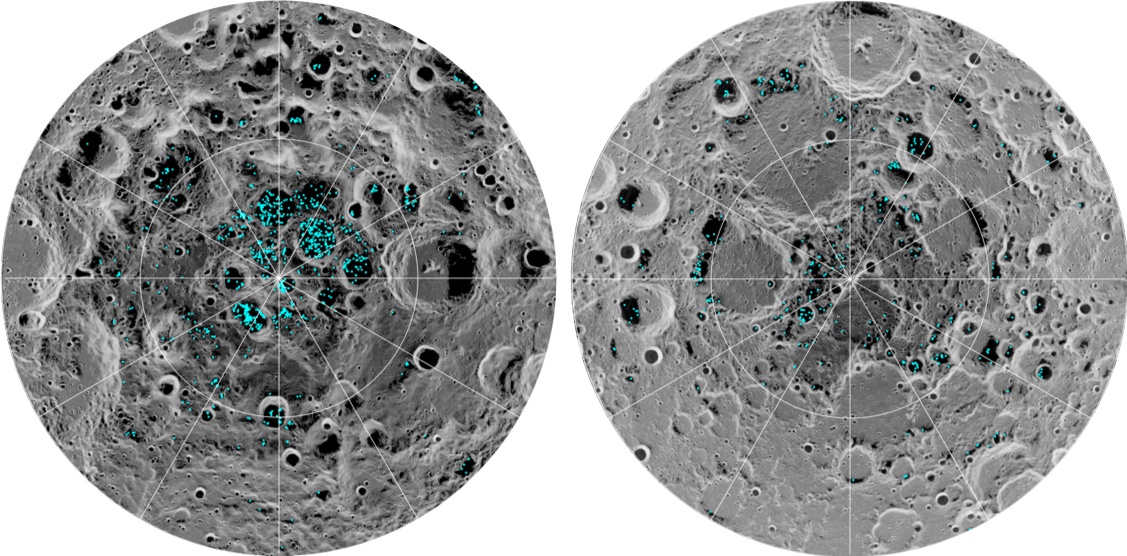Our Moon is a fascinating world that has captivated us since time immemorial. Long before the first telescope was invented, ancient humans used the Moon as a calendar in the sky, with evidence that lunar timekeeping was around as early as 25,000, 30,000, and even 35,000 years before the present. Long before humanity had written language, lived in organized cities, and worshipped structured religions, the Moon was one of humanity’s first timepieces. It wasn’t until the telescope was invented that our Moon became an object of scientific curiosity, with the sketches by Galileo Galilei giving us a new perspective on our nearest celestial neighbor. As science advanced, so did our understanding of the Moon. While the Apollo missions were successful in teaching us about the geology of the Moon, it wasn’t until 2009 when the LCROSS impact probe onboard the Lunar Reconnaissance Orbiter deliberately crashed into a dark crater on the Moon’s south pole and detected 155 kilograms of water as it flew through the ejecta plume before ultimately crashing into the lunar surface.
The south pole of the Moon is of particular interest to NASA because of its permanently shadowed regions, or PSRs, which are areas on the Moon where sunlight never shines on the floors of some polar craters due to the Moon’s axial tilt which is only 1.5 degrees compared to Earth’s 23.5 degrees. Due to the lack of sunlight, it has long been hypothesized that water ice has accumulated within the floors of these craters which can be used on future crewed missions, most notably the upcoming NASA Artemis missions. But how did all this water get there?
In a recent study published in Scientific Reports, scientists at the University of Alaska Fairbanks (UAF) Geophysical Institute suggest that hydrogen and oxygen ions escaping from Earth’s upper atmosphere and combining on the Moon could be one of the sources of the known lunar water and ice. The study was led by UAF Geophysical Institute Associate Research Professor, Dr. Gunther Kletetschka, and adds to a growing body of research about water at the Moon’s north and south poles.

“As NASA’s Artemis team plans to build a base camp on the moon’s south pole, the water ions that originated many eons ago on Earth can be used in the astronauts’ life support system,” Kletetschka said.
The new research estimates the moon’s polar regions could hold up to 3,500 cubic kilometers — 840 cubic miles — or more of surface permafrost or subsurface liquid water created from ions that escaped Earth’s atmosphere. That’s a volume comparable to North America’s Lake Huron, the world’s eighth-largest lake.
Researchers based that total on the lowest volume model calculation — 1% of Earth’s atmospheric escape reaching the moon.
A majority of the lunar water is generally believed to have been deposited by asteroids and comets that collided with the moon. Most was during a period known as the Late Heavy Bombardment. In that period, about 3.5 billion years ago when the solar system was about 1 billion years old, it is argued that the early inner planets and Earth’s moon sustained unusually heavy impact from asteroids.
Scientists also hypothesize that the solar wind is a source. The solar wind carries oxygen and hydrogen ions, which may have combined and been deposited on the moon as water molecules.
Kletetschka and his colleagues suggest hydrogen and oxygen ions are driven into the moon when it passes through the tail of the Earth’s magnetosphere, which it does on five days of the moon’s monthly trip around the planet. The magnetosphere is the teardrop-shaped bubble created by Earth’s magnetic field that shields the planet from much of the continual stream of charged solar particles.
Recent measurements from multiple space agencies — NASA, European Space Agency, Japan Aerospace Exploration Agency and Indian Space Research Organization — revealed significant numbers of water-forming ions present during the moon’s transit through this part of the magnetosphere.
The presence of the moon in the magnetosphere’s tail, called the magnetotail, temporarily affects some of Earth’s magnetic field lines — those that are broken and which simply trail off into space for many thousands of miles. Not all of Earth’s field lines are attached to the planet at both ends; some have only one attachment point. Think of each of these as a thread tethered to a pole on a windy day.
The moon’s presence in the magnetotail causes some of these broken field lines to reconnect with their opposing broken counterpart. When that happens, hydrogen and oxygen ions that had escaped Earth rush to those reconnected field lines and are accelerated back toward Earth.
The paper’s authors suggest many of those returning ions hit the passing moon, which has no magnetosphere of its own to repel them.
“It is like the moon is in the shower — a shower of water ions coming back to Earth, falling on the moon’s surface,” Kletetschka said.
The ions then combine to form the lunar permafrost. Some of that, through geologic and other processes such as asteroid impacts, is driven below the surface, where it can become liquid water.
The research team used gravitational data from NASA’s Lunar Reconnaissance Orbiter to study polar regions along with several major lunar craters. Anomalies in underground measurements at impact craters indicate locations of fractured rock conducive to containing liquid water or ice. Gravity measurements at those subsurface locations suggest the presence of ice or liquid water, the research paper reads.
The latest research builds on work published in December 2020 by four of the new paper’s authors, including Kletetschka.
NASA Artemis
NASA’s Artemis Program is being hailed as the first step in the next era of human space exploration, as one of its goals will be to land the first woman and person of color on the surface of the Moon. Another primary objective of Artemis will be to test technologies that will be essential in sending humans on to Mars in the coming years and decades. With water located at the poles of the Moon, this will decrease the likelihood of constant resupply from Earth and will allow Artemis astronauts to test technologies involving the mining and use of that water ice for drinking, oxygen generation, and fuel, also known as in-situ resource utilization, or ISRU. While the Moon is only 250,000 miles from Earth, the planet Mars is 140,000,000 miles from our home planet, and the testing of various technologies will increase the likelihood of mission success on crewed missions to Mars while ensuring the astronauts can survive the trip and safely returning home.
What further discoveries will we make regarding water on the Moon? Only time will tell, and this is why we science!
As always, keep doing science & keep looking up!
Press Release: University of Alaska Fairbanks
Sources: ScienceNews, Museo Galileo, The Planetary Society, NASA (1), Scientific Reports, NASA (2), NASA (3)

